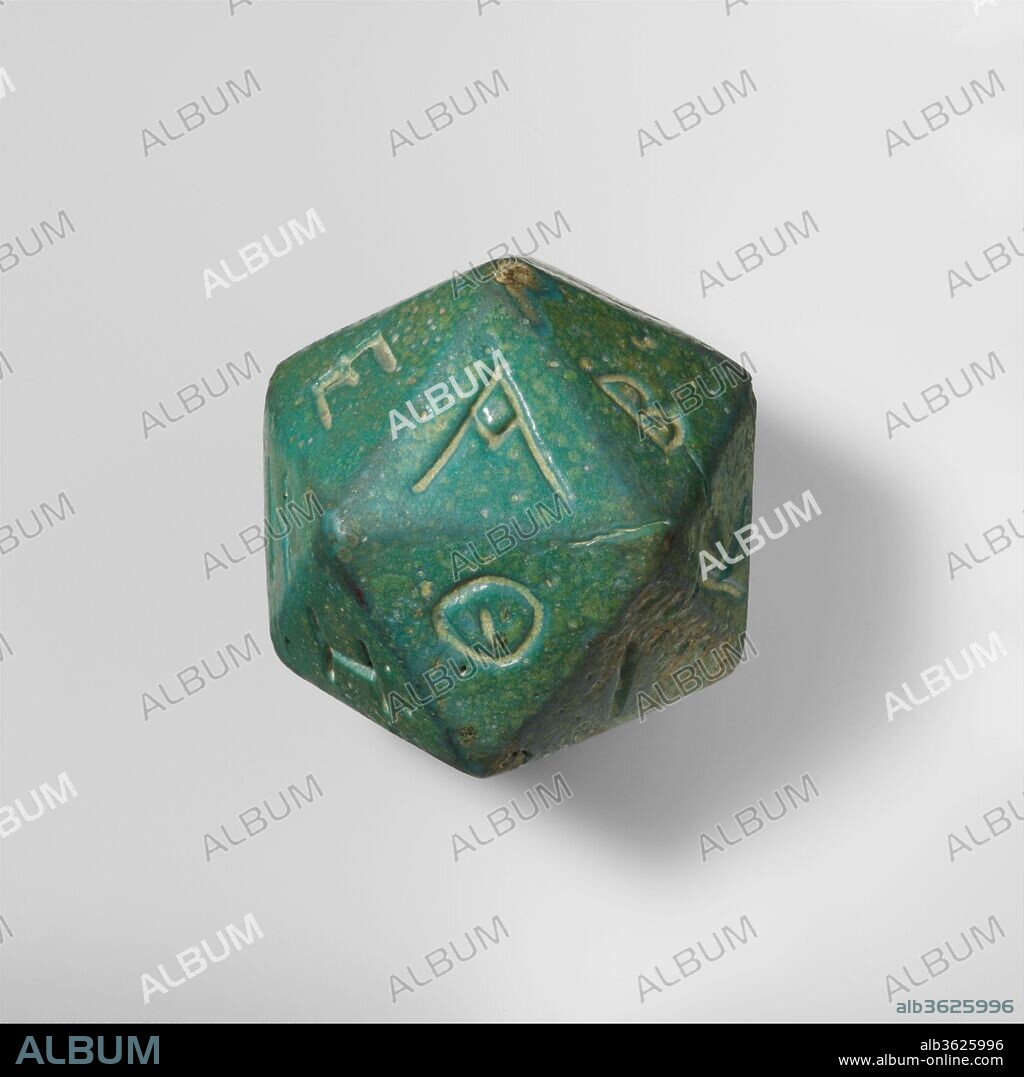alb3625996
Faience polyhedron inscribed with letters of the Greek alphabet

|
Añadir a otro lightbox |
|
Añadir a otro lightbox |



¿Ya tienes cuenta? Iniciar sesión
¿No tienes cuenta? Regístrate
Compra esta imagen

Título:
Faience polyhedron inscribed with letters of the Greek alphabet
Descripción:
Traducción automática: Poliedro de loza con letras del alfabeto griego. Cultura: romana. Dimensiones: Ancho (punto a punto, mayor): 2 11/16 pulg., 7,2 oz. (6,8 cm, 204,9 g) Ancho (punto a punto, el más pequeño): 2 1/2 pulg. (6,3 cm) Ancho (de lado a lado, mayor): 2 3/16 pulg. (5,6 cm) Ancho (de lado a lado , más pequeño): 2 3/16 pulg. (5,5 cm). Fecha: Siglo II-III d.C. Se conocen varios poliedros fabricados en diversos materiales de los períodos helenístico y romano. Es posible que hayan sido utilizados junto con un oráculo inscrito en un pilar instalado en un lugar público. Se lanzaba el poliedro para elegir una letra al azar. Se consultaba la inscripción para encontrar la letra correspondiente y leer la respuesta del oráculo. Habría veinte mensajes oraculares, cada uno comenzando con una letra del alfabeto que correspondía a un lado del dado.
Faience polyhedron inscribed with letters of the Greek alphabet. Culture: Roman. Dimensions: Width (Point to point, greatest): 2 11/16 in., 7.2oz. (6.8 cm, 204.9g)
Width (Point to point ,smallest): 2 1/2 in. (6.3 cm)
Width (Side to side, greatest): 2 3/16 in. (5.6 cm)
Width (Side to side, smallest): 2 3/16 in. (5.5 cm). Date: 2nd-3rd century A.D..
A number of polyhedra made in various materials are known from the Hellenistic and Roman periods. They may have been used in conjunction with an oracle inscribed on a pillar set up in a public place. The polyhedron was thrown in order to choose a letter at random. One consulted the inscription to find the matching letter and read the oracle's response. There would be twenty oracular messages, each beginning with a letter of the alphabet that corresponded to one side of the dice.
Técnica/material:
FAIENCE
Periodo:
Mid Imperial
Museo:
Metropolitan Museum of Art, New York, USA
Localización:
ROMAN EMPIRE
Crédito:
Album / Metropolitan Museum of Art, NY
Autorizaciones:
Modelo: No - Propiedad: No
¿Preguntas relacionadas con los derechos?
¿Preguntas relacionadas con los derechos?
Tamaño imagen:
3981 x 3982 px | 45.4 MB
Tamaño impresión:
33.7 x 33.7 cm | 13.3 x 13.3 in (300 dpi)
Palabras clave:
 Pinterest
Pinterest Twitter
Twitter Facebook
Facebook Copiar enlace
Copiar enlace Email
Email
